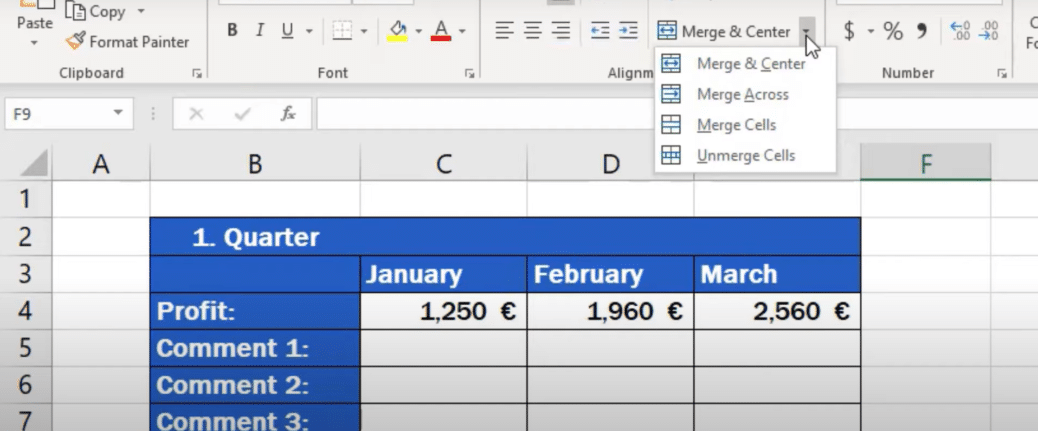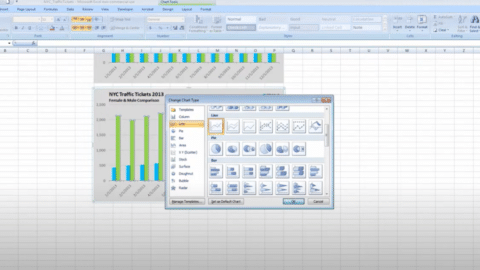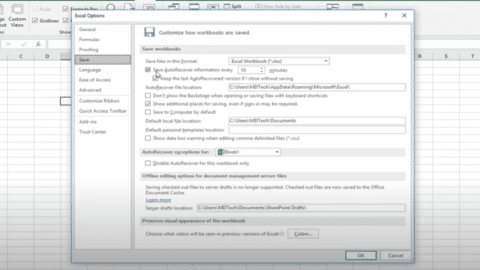Maximize Your Data Organization with Column Merge in Excel
Column Merge in Excel is a useful feature that allows users to combine multiple columns into a single column. This can be particularly useful when dealing with large data sets or creating a more organized and easily readable layout.
Table of Contents
How to Merge Columns in Excel
To merge columns in Excel, follow these steps:
- Open the Excel spreadsheet containing the columns you want to merge.
- Select the cells in the columns you want to merge. You can do this by clicking and dragging your mouse over the cells or holding down the Ctrl key while clicking on each cell.
- Go to the “Home” tab in the top menu.
- In the “Alignment” group, click on the “Merge and Center” button. This will merge the selected cells into a single cell.

Column Merge in Excel is a useful feature that allows users to combine multiple columns into a single column. This can be particularly useful when dealing with large data sets or creating a more organized and easily readable layout.
Tips for Merging Columns
There are a few things to keep in mind when merging columns in Excel:
- Make sure all the cells you want to merge contain the same data type. If the cells contain different data types, Excel will only merge the cells containing the same data type.
- If you have merged cells that contain formulas, the formulas will be lost once the cells are merged. To preserve formulas, you must copy and paste them into the merged cell.
- You can unmerge cells by selecting the merged cell and clicking the “Merge and Center” button again. This will split the merged cell back into its original cells.
Advanced Column Merging Techniques
In addition to the basic column merging process described above, there are a few more advanced techniques you can use to merge columns in Excel:
- Use the “Concatenate” function to merge cells without losing data. The “Concatenate” function allows you to combine the contents of multiple cells into a single cell while preserving the original data in the other cells. To use the “Concatenate” function, enter “=CONCATENATE(cell1, cell2, cell3, etc.)” into a cell, where “cell1”, “cell2”, etc. are the cells you want to merge.
- Use the “Text to Columns” feature to split a single column into multiple columns. This can be useful if you have a large amount of data in a single column that you want to split into separate columns for easier reading and analysis. To use the “Text to Columns” feature, select the column you want to split, go to the “Data” tab in the top menu, and click on the “Text to Columns” button. This will open a wizard that will guide you through splitting the column into multiple columns.
When to Use Column Merge in Excel
Column merge can be useful in several situations where you want to combine data from multiple columns into one for easier reading or analysis. Some common scenarios where column merge can be helpful include:
- It combines data from multiple columns into a single column for a cleaner and more organized layout.
- We merge data from different columns to create a comprehensive list.
- It is combining data from multiple columns into a single cell creates a more visually appealing table or chart.
Alternatives and Limitations
While column merge can be a useful tool, it’s important to keep in mind that it has a few limitations:
- Once cells are merged, they can no longer be edited individually. This can make it difficult to change specific data pieces within the merged cell.
- Merging cells can sometimes cause formatting issues, such as misaligned text or variable cell sizes.
- Merging cells can make it more difficult to sort or filter data, as the merged cell may not behave the same way as individual cells.
There are a few alternatives to column merge that you may want to consider if you’re looking to combine data from multiple columns in Excel:
- Use the “Concatenate” function to merge cells without losing data. This allows you to combine the contents of multiple cells into a single cell while preserving the original data in the other cells.
- Use the “Text to Columns” feature to split a single column into multiple columns. This can be useful if you have a large amount of data in a single column that you want to split into separate columns for easier reading and analysis.
- Use pivot tables to combine data from multiple columns and organize it more meaningfully. Pivot tables allow you to summarize and analyze large amounts of data quickly and can be a powerful tool for data analysis.
FAQ
-
Can I merge cells that are not next to each other?
Yes, you can merge cells not next to each other by selecting all the cells you want to merge and then clicking the “Merge and Center” button.
-
Can I merge cells that contain different types of data?
No, Excel will only merge cells containing the same data type. If you try to merge cells containing different data types, Excel will only merge the cells containing the same data type.
-
How do I unmerge cells?
Select the merged cell and click the “Merge and Center” button to unmerge cells. This will split the merged cell back into its original cells.
Hello, I’m Cansu, a professional dedicated to creating Excel tutorials, specifically catering to the needs of B2B professionals. With a passion for data analysis and a deep understanding of Microsoft Excel, I have built a reputation for providing comprehensive and user-friendly tutorials that empower businesses to harness the full potential of this powerful software.
I have always been fascinated by the intricate world of numbers and the ability of Excel to transform raw data into meaningful insights. Throughout my career, I have honed my data manipulation, visualization, and automation skills, enabling me to streamline complex processes and drive efficiency in various industries.
As a B2B specialist, I recognize the unique challenges that professionals face when managing and analyzing large volumes of data. With this understanding, I create tutorials tailored to businesses’ specific needs, offering practical solutions to enhance productivity, improve decision-making, and optimize workflows.
My tutorials cover various topics, including advanced formulas and functions, data modeling, pivot tables, macros, and data visualization techniques. I strive to explain complex concepts in a clear and accessible manner, ensuring that even those with limited Excel experience can grasp the concepts and apply them effectively in their work.
In addition to my tutorial work, I actively engage with the Excel community through workshops, webinars, and online forums. I believe in the power of knowledge sharing and collaborative learning, and I am committed to helping professionals unlock their full potential by mastering Excel.
With a strong track record of success and a growing community of satisfied learners, I continue to expand my repertoire of Excel tutorials, keeping up with the latest advancements and features in the software. I aim to empower businesses with the skills and tools they need to thrive in today’s data-driven world.
Suppose you are a B2B professional looking to enhance your Excel skills or a business seeking to improve data management practices. In that case, I invite you to join me on this journey of exploration and mastery. Let’s unlock the true potential of Excel together!
https://www.linkedin.com/in/cansuaydinim/










